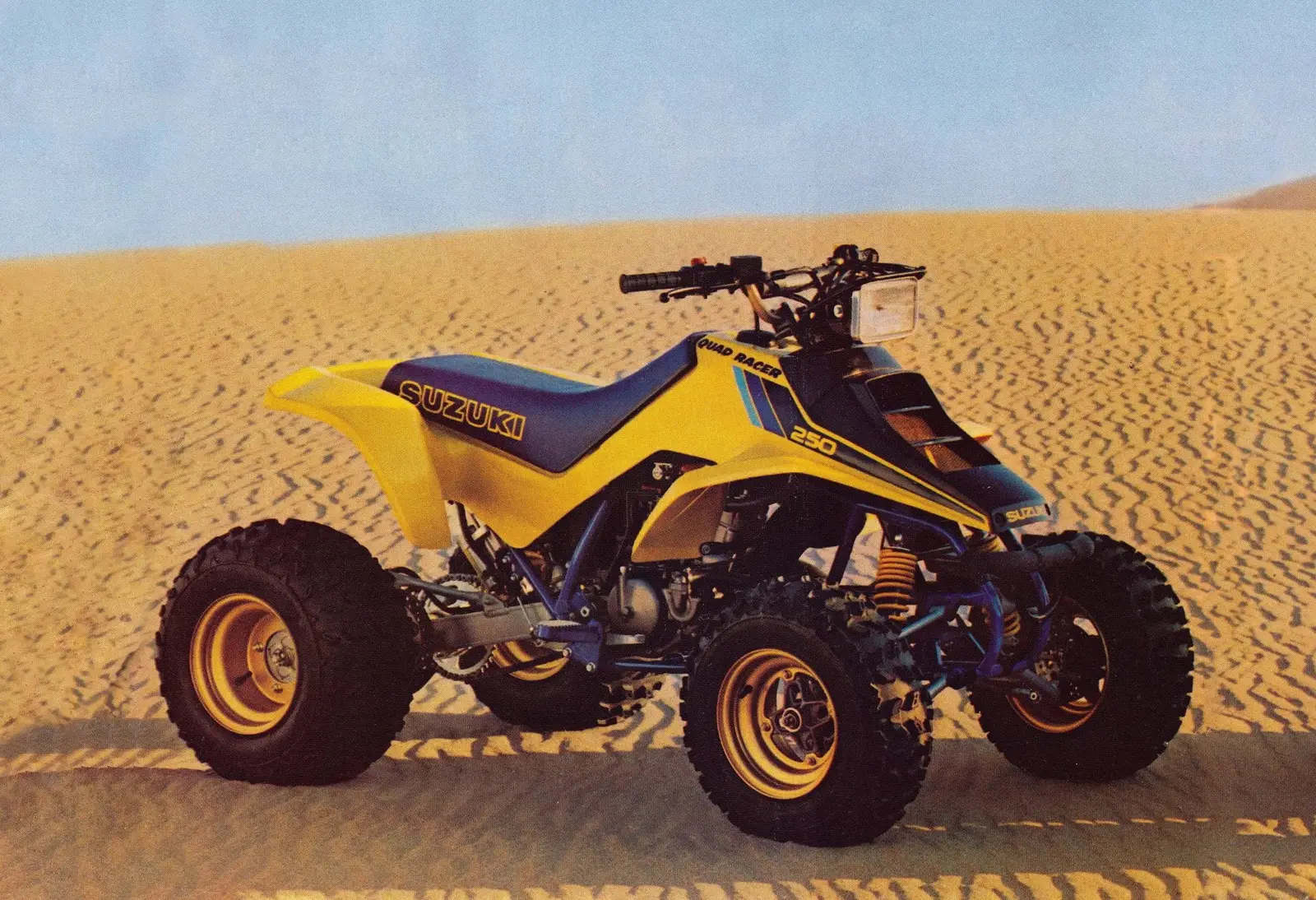Table of contents
ToggleIn the mid-80s, racetracks echoed with the roar of three-wheelers. Against all odds, Suzuki made a radical choice. The brand abandoned the dominant formula to bet on a chassis… with four wheels! This bold gamble gave birth to the legendary LT250R. It wasn’t just a quad, but a true revolution.
Suzuki LT250R QuadRacer: Birth of a Legend
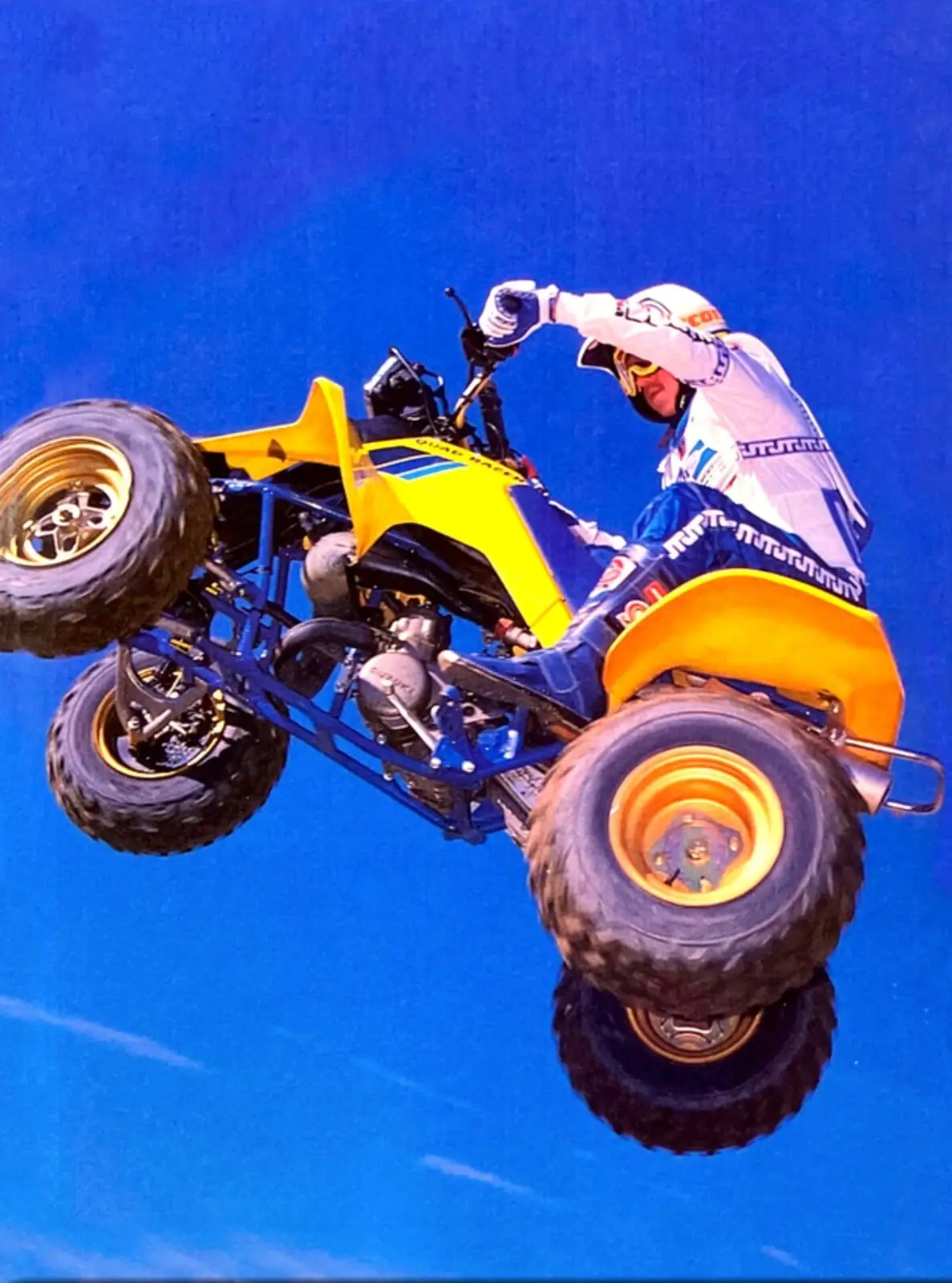
At the turn of the ’80s, Japanese brand Suzuki had earned an excellent reputation thanks to its lineup of rugged off-road vehicles, available versions of 50 cc, 125 cc, and 185 cc. These ATVs, offered in three- or four-wheel versions, mainly appealed to riders seeking peaceful trail rides and forest cruising. Nothing suggested that the Japanese brand would become a reference in the sports quad segment.
Yet in 1985, Suzuki struck hard. Founded in 1909 by Michio Suzuki, the brand surprised everyone. While Honda, Yamaha, and Kawasaki reigned with their three-wheelers (ATC, Tri-Z, Tecate), Suzuki dared the unexpected: performance on four wheels. Out of this bold choice came the LT250R QuadRacer. A model that would redefine the performance ATV category.
A Machine Ahead of Its Time
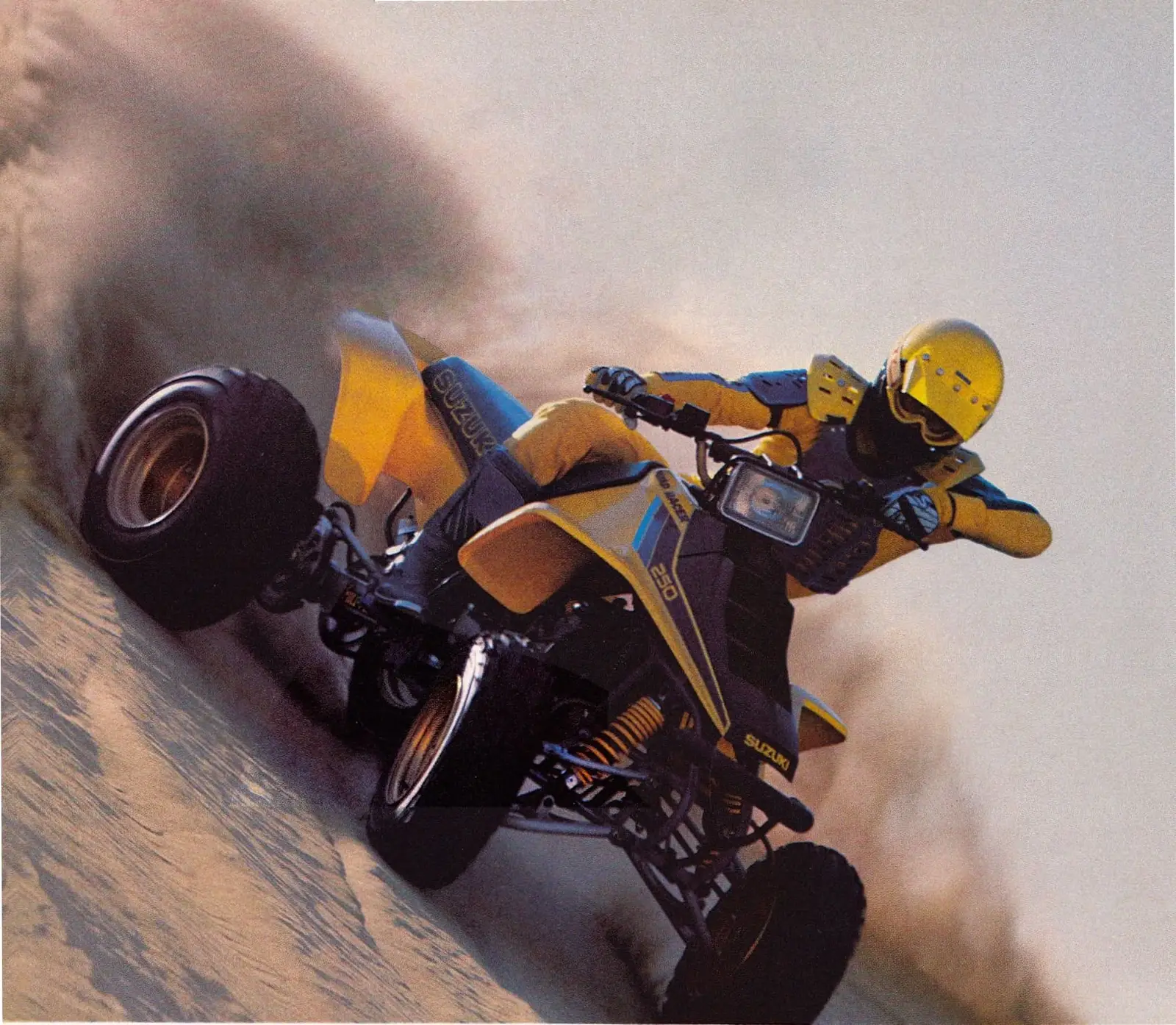
From its release, the LT250R set a new standard. It came with an aggressive two-stroke liquid-cooled engine. Its five-speed manual gearbox was precise. Along with long-travel suspension, it also featured hydraulic brakes. Far from being a simple leisure quad, it was a true race-ready beast, born to tear up the track straight out of the factory.

Suzuki didn’t just innovate: it anticipated! While other brands were still trying to optimize their three-wheelers, Suzuki skipped a generation entirely and laid the foundation for the modern sports quad. A bold and prophetic vision, since in 1988, the United States banned the sale of new three-wheeled ATVs for safety reasons.
A Controlled Evolution
Produced from 1985 to 1992, the LT250R underwent several major evolutions. The first versions (1985–1986) came with a raw-finish aluminum engine derived from enduro motorcycles.
1987 was the year of the biggest redesign
- Blue-painted engine with SAEC exhaust valve
- Reinforced frame and swingarm
- Increased travel front suspension
- Redesigned rear suspension for more durability
- Reinforced 6-speed gearbox
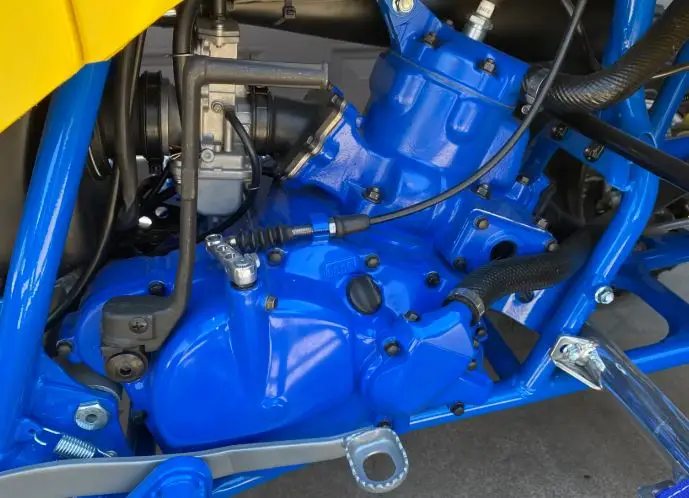
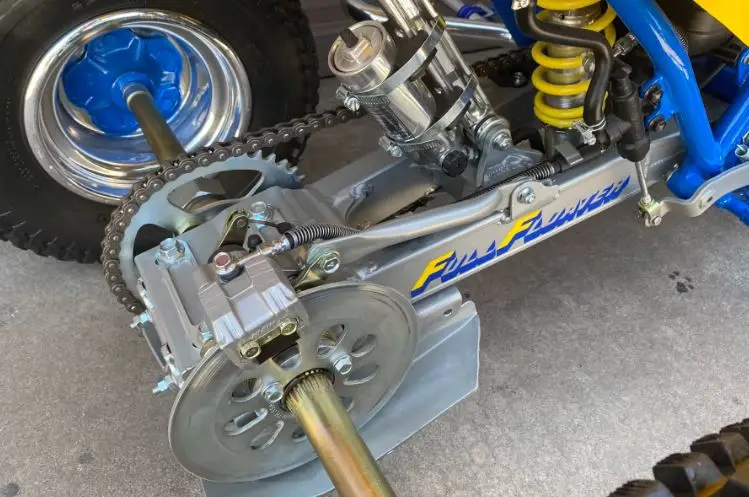
A real turning point that allowed the LT250R to better handle aggressive riding demands while gaining reliability.
LT250R vs. LT500R: Two Icons, One Lineage
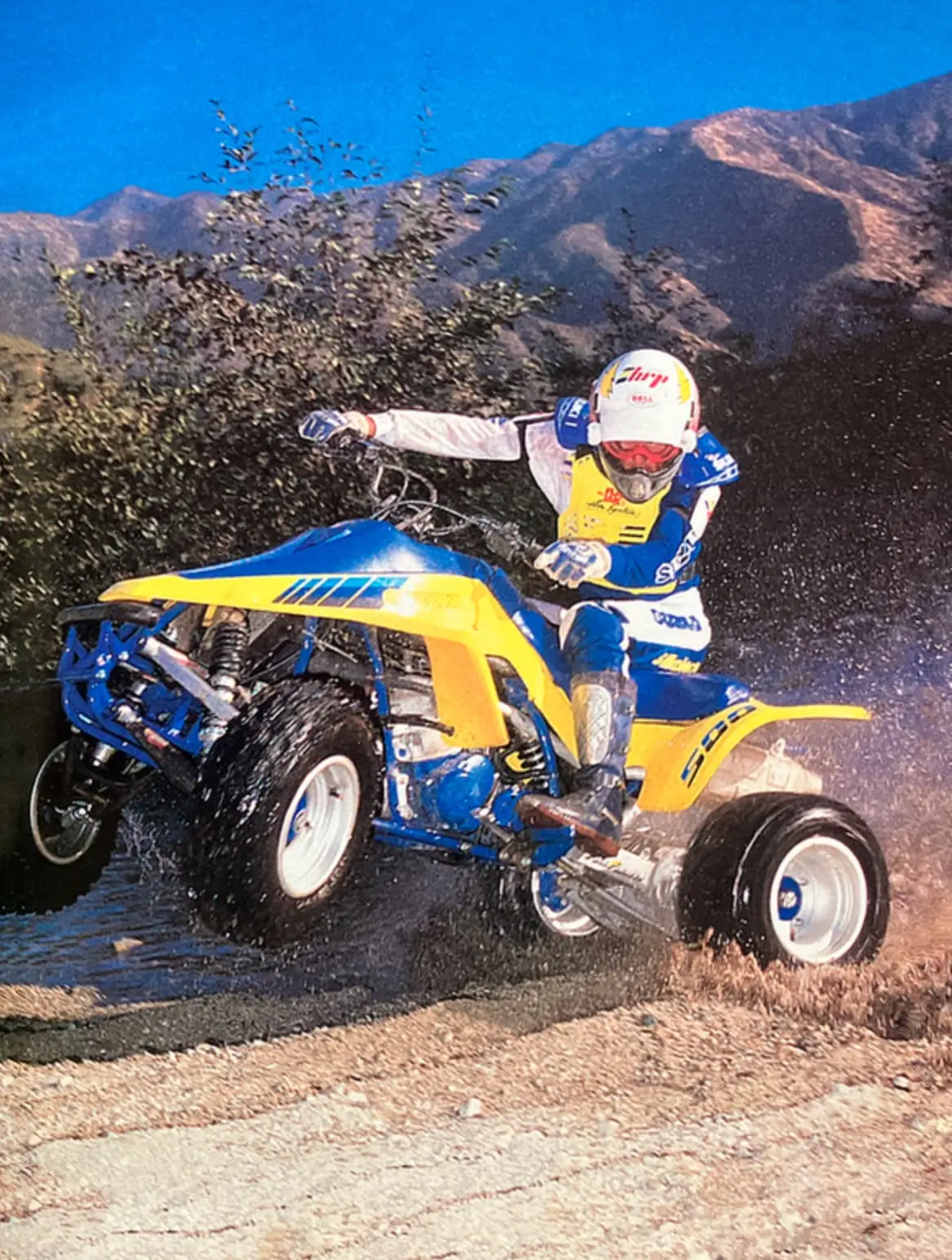
Starting in 1987, the LT250R shared the spotlight with a true monster: the LT500R, also nicknamed “Quadzilla.” Bigger and more powerful, the LT500R still shared the same yellow-and-blue styling DNA as the other models. It deserves an article of its own. This iconic duo left a permanent mark on sports quad history.
The Lasting Legacy of the Suzuki LT250R QuadRacer
Even though the Honda TRX250R remains the ultimate rival, the Suzuki LT250R QuadRacer established itself as a fierce competitor. Thanks to its constant innovations and solid technical base, it earned the respect of riders, tuners, and enthusiasts worldwide.

In fact, this wasn’t Suzuki’s first big move: in 1983, it had already made history with the world’s first mass-produced four-wheel ATV, the LT125. Once again, the brand was a step ahead.
Specifications (1992 model)

- Dry weight: 147 kg (324 lbs)
- Original price: $3,599
- Production: 1985 to 1992
- Displacement: 246 cc
- Transmission: 6-speed manual
- Cooling: liquid
- Suspension: long-travel
- Brakes: hydraulic disc
- Dimensions: 72 in long, 44.7 in wide
- Strength: a configuration still close to today’s sports quads
As a former owner of this legendary quad in its final production year (1992), I was impressed by several aspects:
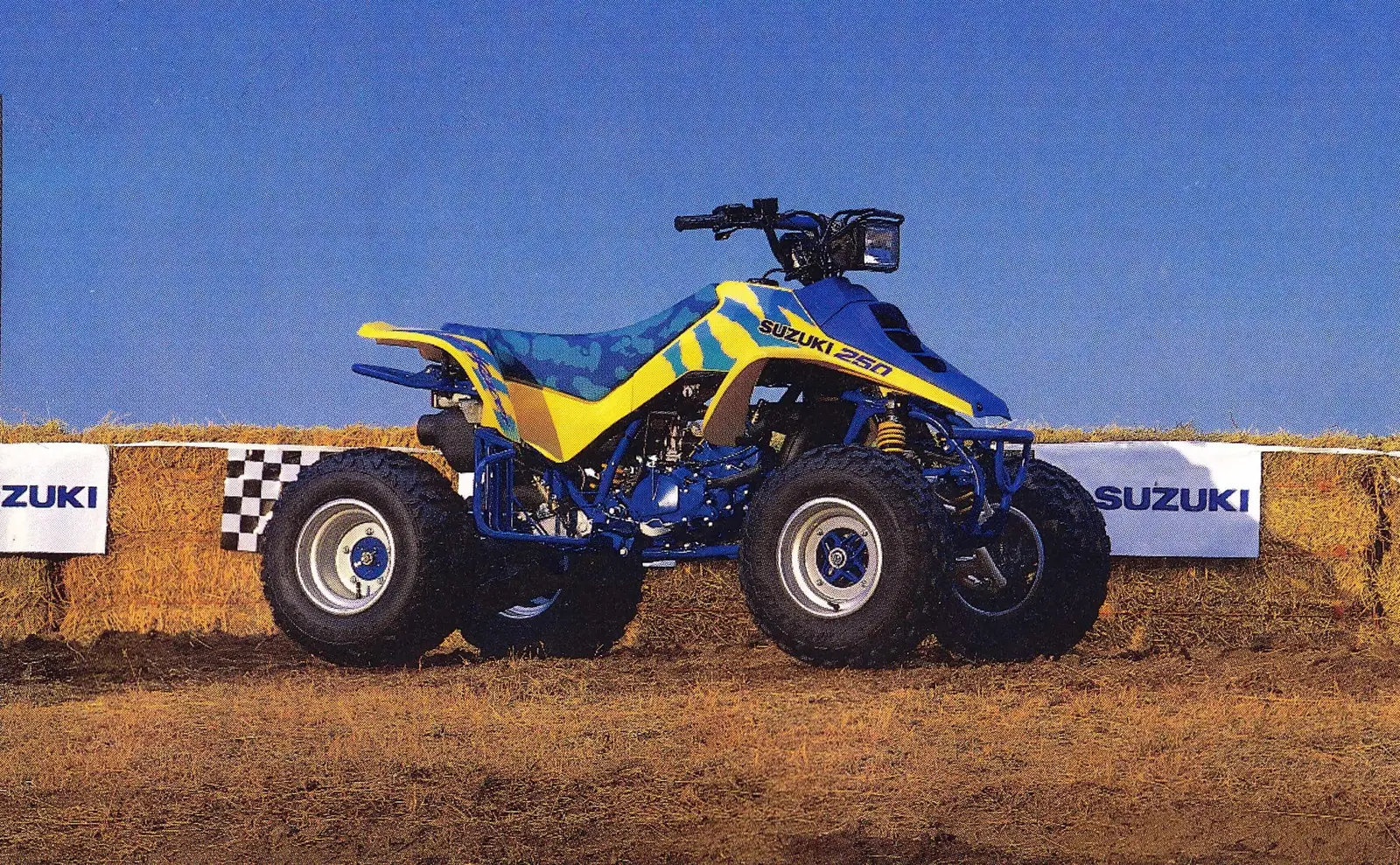
Ergonomics
Its T-shaped seat and minimalist controls made it easy to feel comfortable and in control right away.
The Look
It was impossible not to turn heads with its yellow-and-blue combination. Its three-section front grille was another feature that set it apart.
Performance
A bit of tuning and the addition of a few performance parts were enough to outpace many competitors.
Ease of Maintenance
Servicing the air filter and replacing certain parts was quick and simple.
Conclusion: Why the LT250R QuadRacer Remains a Benchmark
With its performance-oriented design, continuous improvements, and racing DNA, the LT250R QuadRacer firmly established itself as a benchmark. In Quebec, just mentioning the names of brothers Jean and Pierre Désormeaux brings back countless memories of their championship victories. They, in their own way, inspired a whole generation of machines and paved the way for modern sports quads as we know them today.

More than three decades later, the Suzuki LT250R QuadRacer remains an icon. Not only for what it represented, but for what it triggered: the beginning of a new era where power, handling, and stability redefined the rules of the off-road game.

